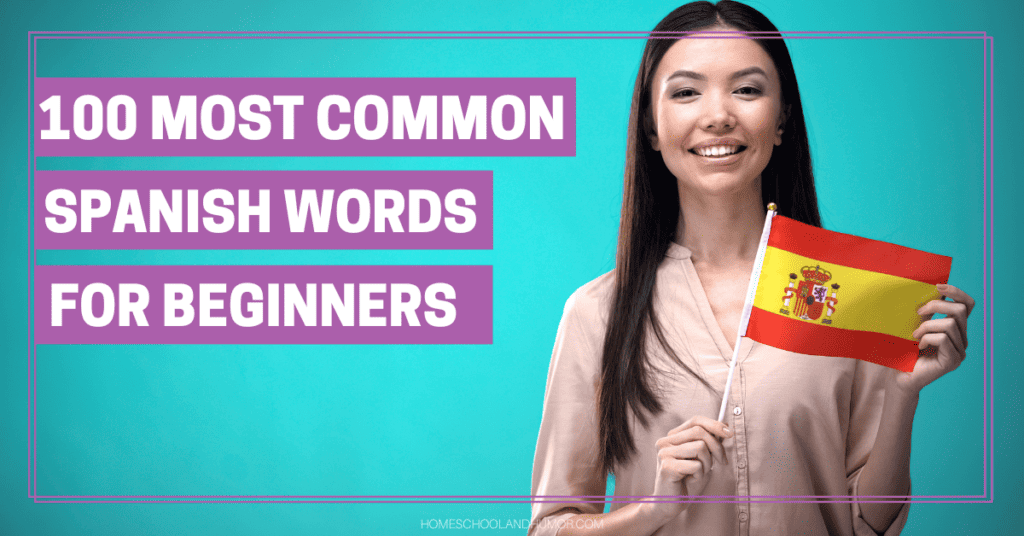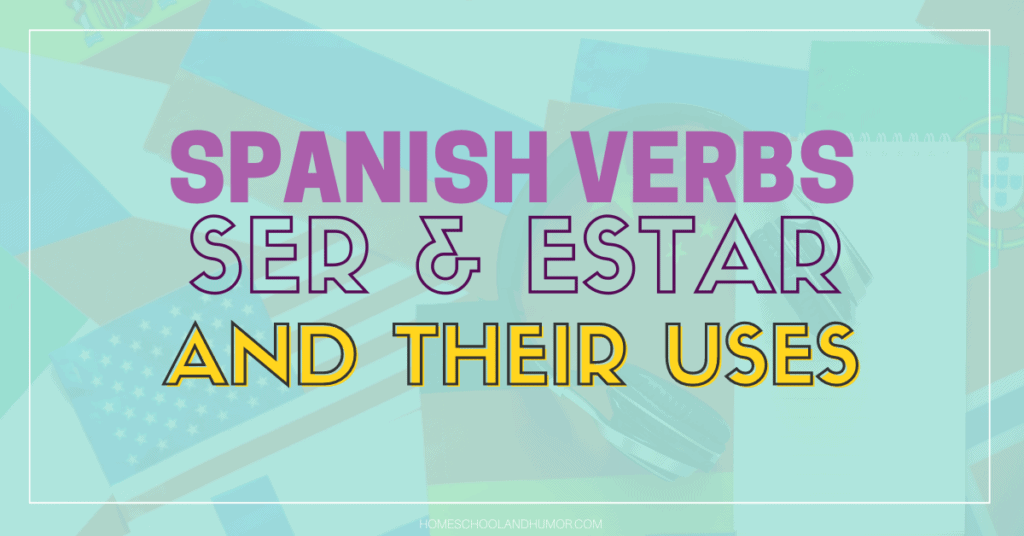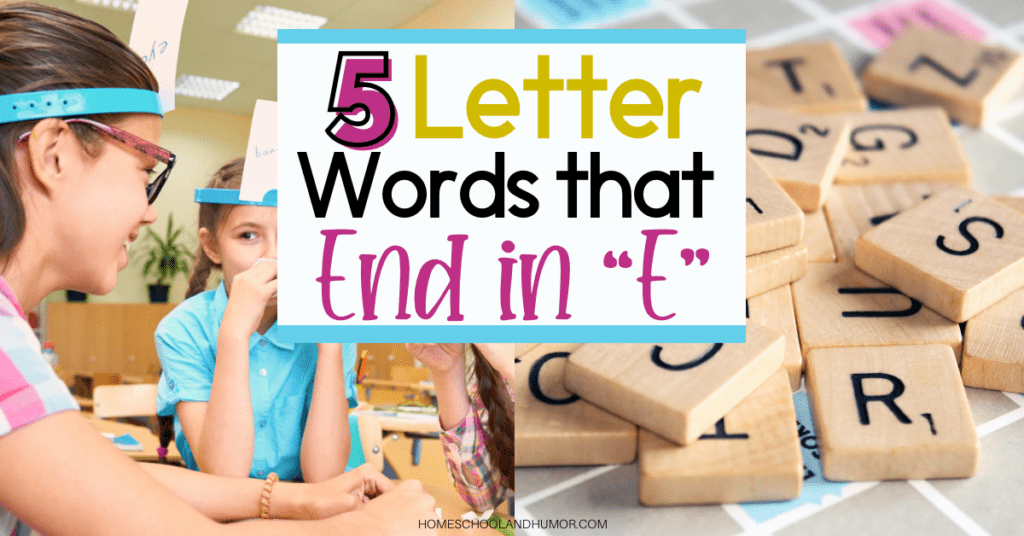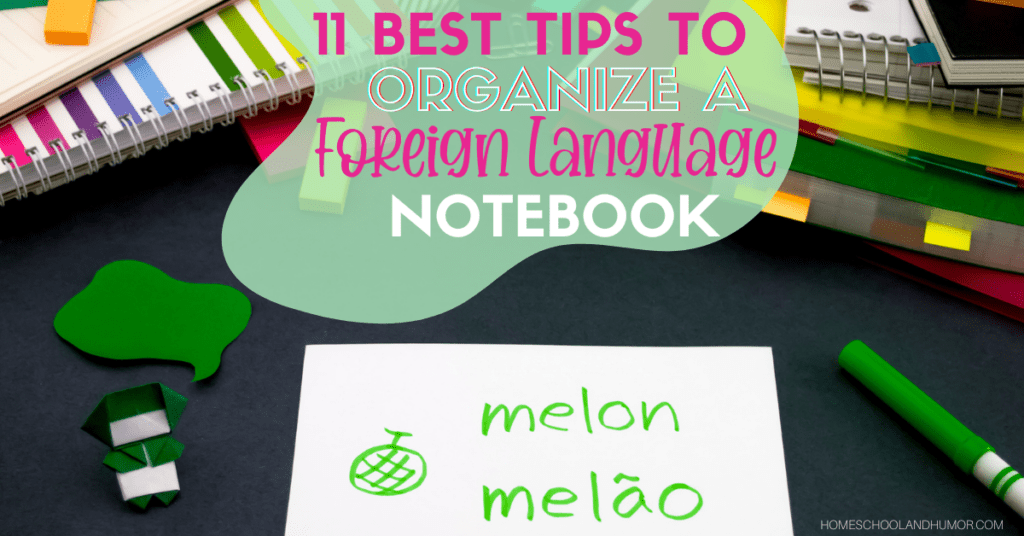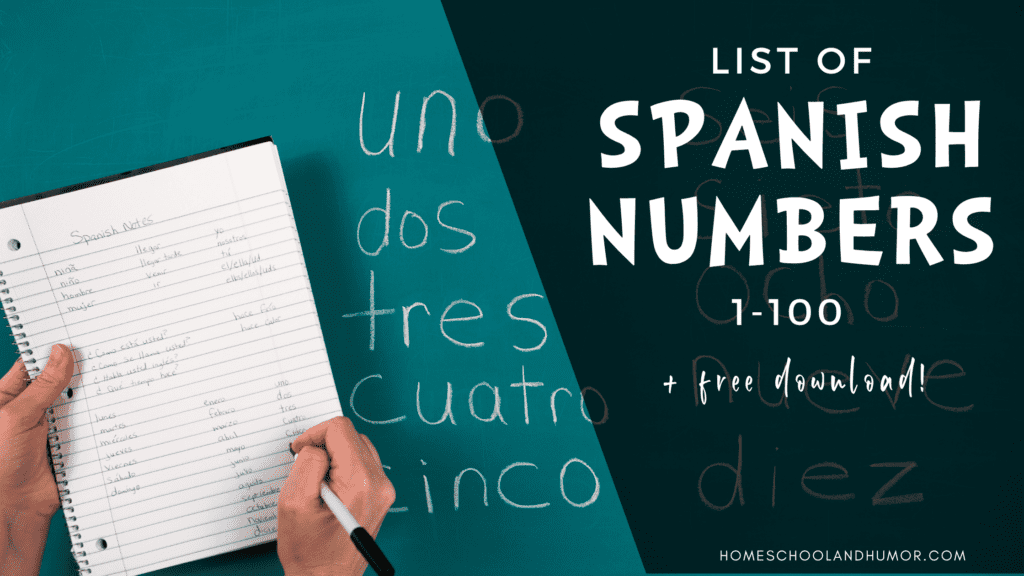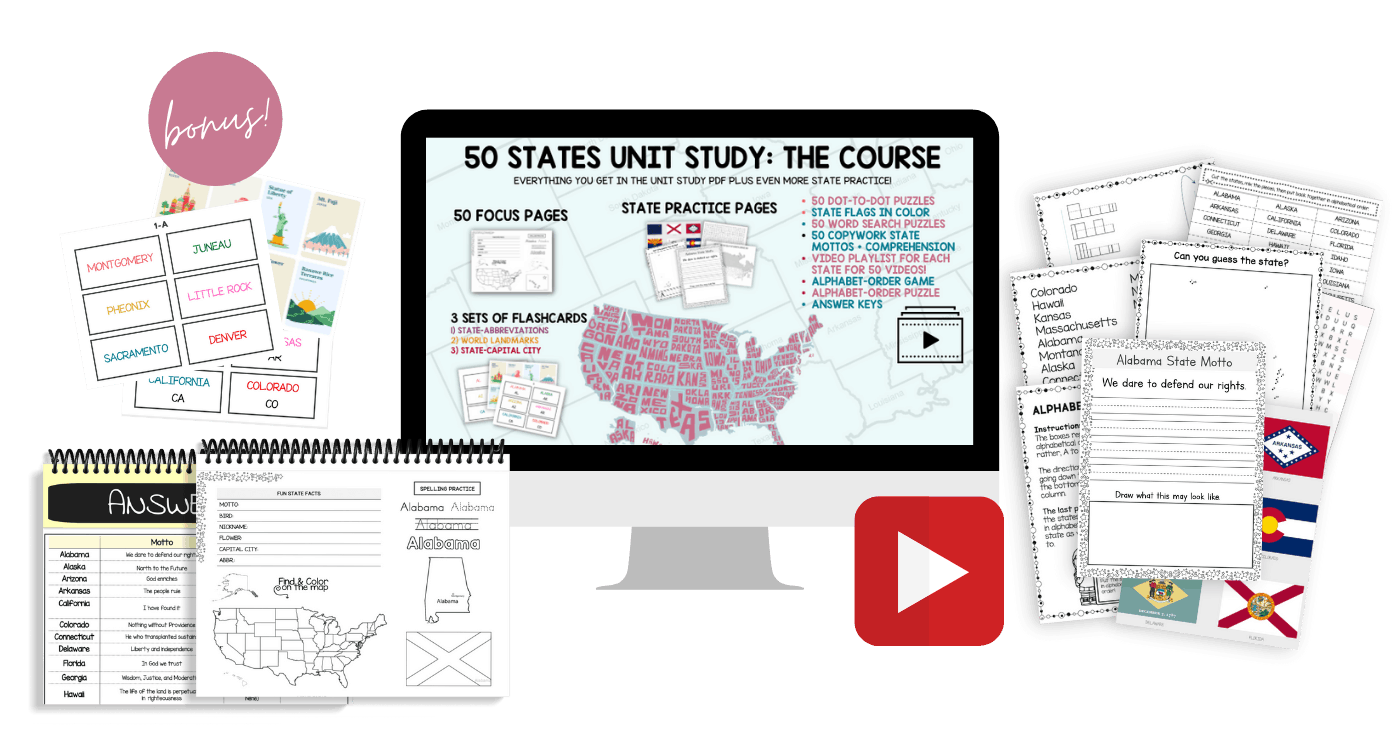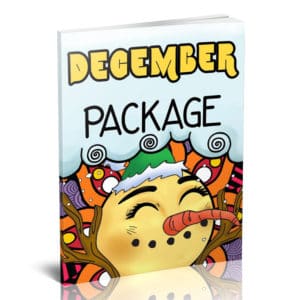As a homeschool mom, you know that learning another language is a great way to keep your child’s brain active and help them learn new things. Learning Spanish can be especially beneficial, as it is one of the most commonly spoken languages in the world. And, while there are certainly many ways to learn Spanish, one of the best ways to do so is by using good Spanish adjectives.
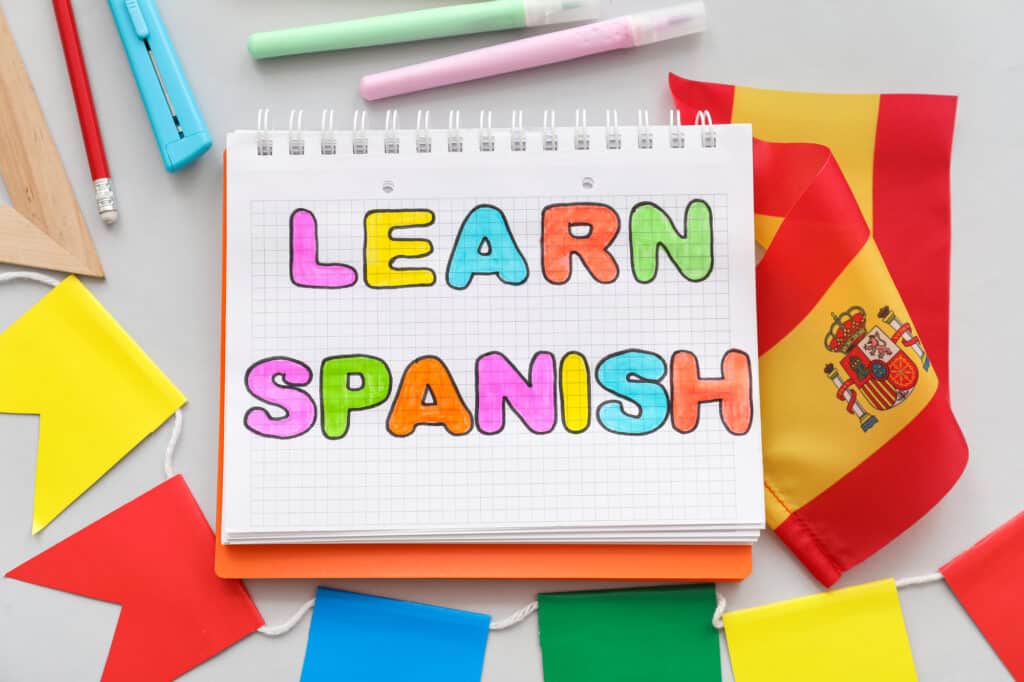
Adjectives are words that describe qualities or characteristics of nouns, and they can help your child better understand how to use Spanish correctly. Don’t just teach them adjectives for the sake of teaching them Spanish adjectives, begin teaching them with GOOD Spanish ones!
So, if you’re looking for a way to help your child learn more about this beautiful language, here are some common Spanish adjectives to get started with!
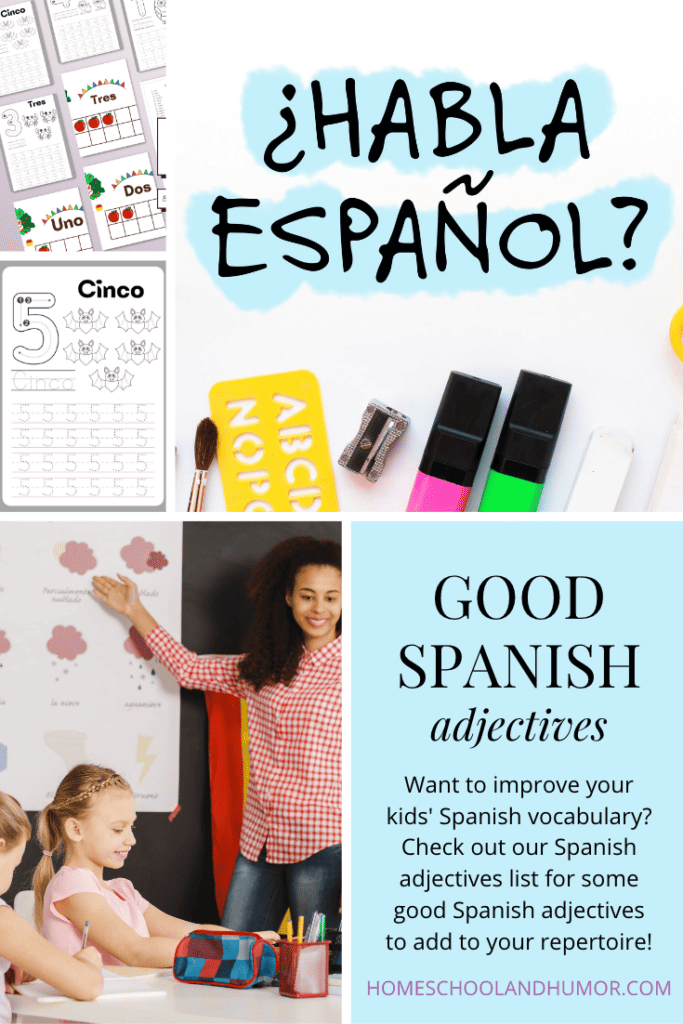
Disclaimer: This post may have affiliate links for your convenience. See our disclosures here.
Quick Navigation
76 Good Spanish Adjectives
Sure, you could use a thesaurus to find synonyms for “good,” but that doesn’t always yield the most accurate or interesting results. Check out some of these Spanish adjectives that mean “good” to help add a little variety (and flavor!) to your writing. ¡Qué bueno!
When learning Spanish, it’s important to know good adjectives to describe people, places, and things. Here are 76 common Spanish adjectives that you can use. Check out the Spanish adjectives list below:
- bonito/a: pretty
- bueno/a: good
- grande: big
- inteligente: smart
- joven: young
- feo/a: ugly
- malo/a: bad
- pequeño/a: small
- tonto/a: foolish
- viejo/a: old
- gordo/a: fat
- alto/a: tall
- guapo/a: handsome, good-looking
- fuerte: strong
- débil: weak
- rico/a: rich
- – pobre: poor
- impio/a: clean
- sucio/a: dirty
- bonito/a: nice, beautiful
- agradable: pleasant, nice
- encantador/a: lovely, charming
- horrible: terrible, awful
- interesante: interesting
- aburrido/a: boring
- dulce: sweet (can also describe people)
- fino/a: elegant, Fine (clothing)
- amable: friendly
- cariñoso/a: affectionate
- cortés: polite
- valiente: brave
- orgulloso/a: proud
- pícaro/a: mischievous
- sabio/a: wise
- serio/a: serious, earnest
- tranquilo/a: peaceful, calm
- tímido/a: shy
- fiel: faithful
- generoso/a: generous
- gracioso/a: funny
- honesto/a: honest
- humilde: humble
- jovial: good-natured, cheerful
- justo/a: fair, just
- lleno de vida: full of life
- modesto/a: moderate, simple
- respetuoso/a: respectful
- simpático/a: likable, sympathetic
- animado/a: lively, spirited
- cauto/a: cautious
- de buen humor: in a good mood, good-humored
- energético/a:: energetic, full of energy
- entusiasta: enthusiastic, excited
- feliz: happy, content
- misterioso/a: mysterious
- paciente: patient
- pasivo/a: passive, laid back
- exasperado/a: frustrated, annoyed
- indiferente: indifferent
- preocupado/a: worried, concerned
- estricto/a: strict, severe
- frío/a: cold, unfriendly
- amargo/a: bitter
- corto (de estatura): short (height)
- delgado/a: thin
- largo (de estatura): long (height)
- pelirrojo/a: red-haired
- rubio/baja de estatura:: short (stature)
- calvo/a: baldfuerte (musculatura): muscular
- gracioso/a: funny-looking, comical
- peludo/a: hairy
- sano/a: healthy
- enfermo/a: sick
- ciego/a: blind
- sordo/a: deaf
- mudo/a: mute, unable to speak

Remember, as seen in the above adjectives in Spanish examples, an adjective come after the noun they modify. So, if you wanted to say “the pretty girl,” you would say “la chica bonita.” Similarly, if you wanted to say “the good car,” you would say “el coche bueno.”
How Your Kids Can Practice Using These Spanish Adjectives List
Now that you have a good list of Spanish adjectives, it’s time for your kids to put them to good use! Here are a few tips on how to get them started:
Use them in conversation: A great way to learn Spanish (or any language, for that matter) is by immersing yourself in it. So, try using some of these adjectives in conversation with native Spanish speakers. You may even want to write them down on note cards so you can reference them when needed.
Use them in writing: Another great way to learn good Spanish adjectives is by using them in your writing. Try incorporating them into short stories, journal entries, or even just lists. Not only will this help you remember them better, but you’ll also get some good practice using them in context.
Learn the opposites: As with any vocabulary, it’s also important to learn the opposites of these common Spanish adjectives. That way, you’ll be able to express a wider range of emotions and descriptions. For example, the opposite of “bonito” is ” feo,” and the opposite of “bueno” is “malo.”
Study them with flashcards: Flashcards are always a good way to review vocabulary. You can make your own by writing the Spanish adjective on one side and the English translation on the other. Or, you can find ready-made flashcards online or at your local bookstore.
Click the image below to download FREE Spanish Alphabet Flash cards!
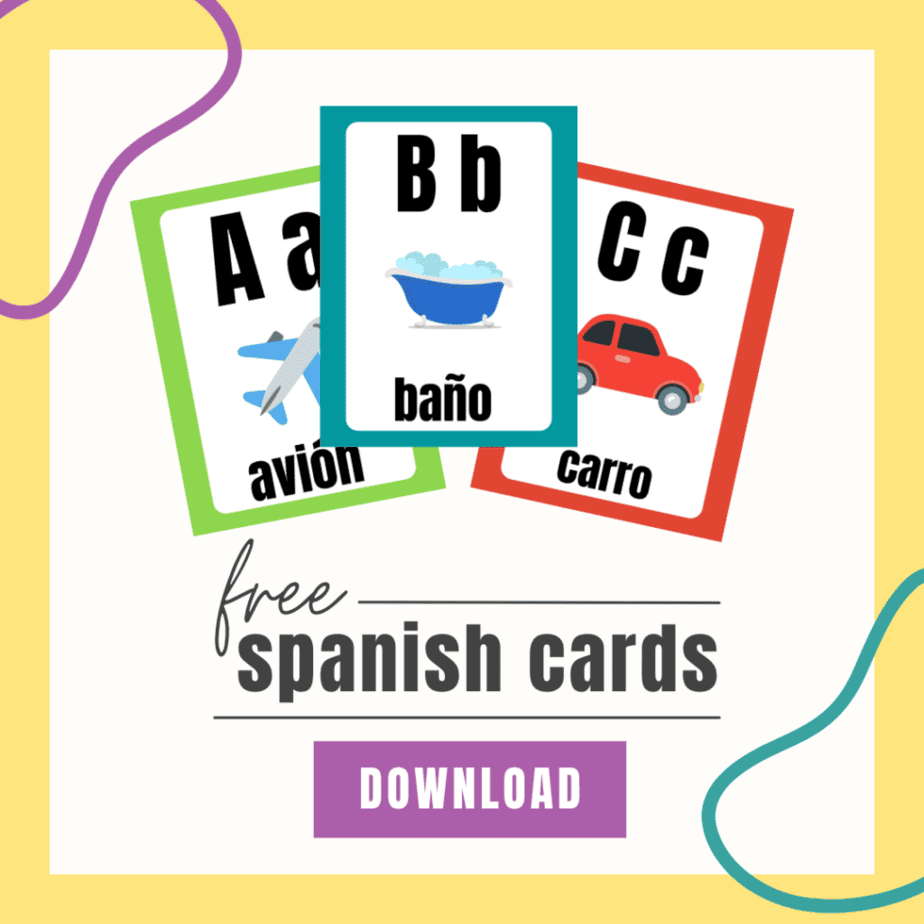
Practice, practice, practice: The only way to really master these good Spanish adjectives (or any vocabulary, for that matter) is to use them as often as possible. So, get out there and start practicing! Soon, you’ll be using them like a native speaker.
Common Spanish Adjectives List And Their Uses
Adjectives are words that describe or modify another person or thing in a sentence. In Spanish, as in English, adjectives can go before or after the noun they modify. For example, you could say “the red car” (el coche rojo) or “the car is red” (el coche es rojo).
However, unlike English, Spanish adjectives often have different forms depending on the gender of the noun they modify. For example, the adjective “rojo” (red) changes to “roja” when used to describe a feminine noun and “rojos” when used to describe a masculine noun. It also changes to “rojos” when used to describe a group of mixed gender nouns.
Masculine nouns are typically used with masculine adjectives and feminine nouns are typically used with feminine adjectives. However, there are some exceptions to this rule.
For example, the adjective ” blue” can be used to describe both masculine and feminine nouns.
In addition, Spanish adjectives can also change form depending on whether they are being used alone or in conjunction with other adjectives. For example, the adjective “bueno” (good) changes to “mejor” (better) when used with another adjective.
When learning Spanish adjectives, it’s important to pay attention to these small details. Otherwise, you may find yourself using the wrong form and sounding like a non-native speaker.
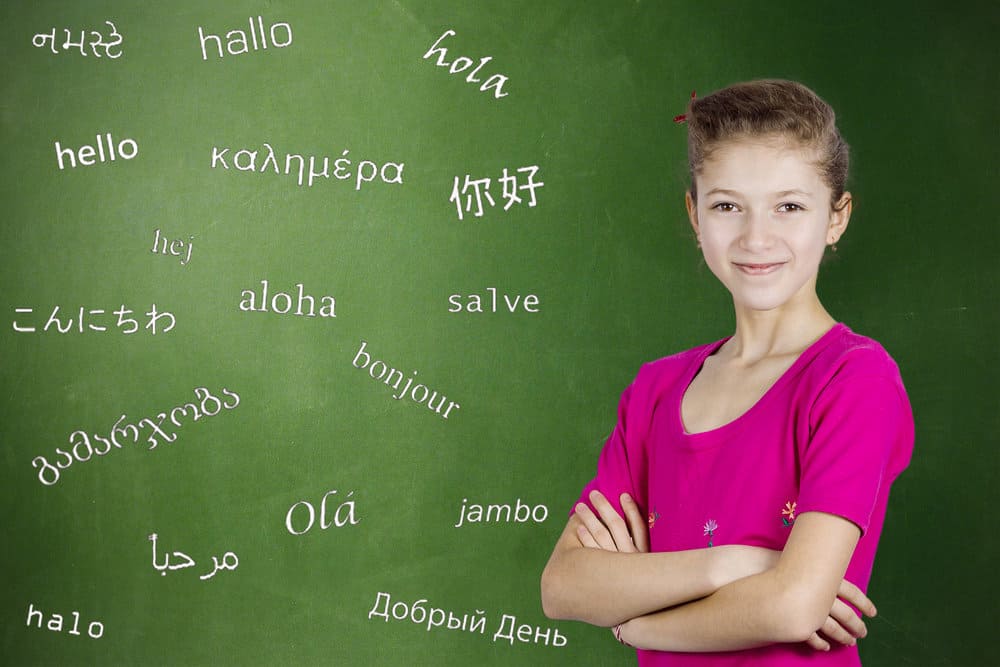
Different Types of Adjectives In Spanish Examples
There are four different types of adjectives in Spanish:
Descriptive Adjectives: These are the most common type of adjective and are used to describe the physical characteristics of a person or thing. For example, “rojo” (red), “grande” (big), and “bonito” (pretty).
Possessive Adjectives: These adjectives show ownership or possession. For example, “su” (your), “nuestro” (our), and “aquel” (that).
Demonstrative Adjectives: These adjectives are used to point out specific people or things. For example, “este” (this), “aquella” (that), and “los cuales” (the ones).
Interrogative Adjectives: These adjectives are used to ask questions about people or things. For example, “qué” (what), “cuál” (which), and “cuánto” (how much).
Descriptive Adjectives in Spanish Examples
The most common type of adjective in Spanish is the descriptive adjective. Such adjectives are used to describe the physical characteristics of a person or thing.
For example, “rojo” (red), “grande” (big), and “bonito” (the English word is pretty).
When using descriptive words or adjectives in Spanish, it’s important to help our little Spanish learners remember that they must agree with the Spanish nouns they are modifying in both gender and number. In other words, if a masculine noun is being described, the adjective must also be masculine. And if a feminine noun is being described, the adjective must also be feminine.
The same goes for plural nouns. If a plural noun is being described, the adjective must also be in the plural form.
Possessive Spanish Adjectives List
Possessive adjectives are used to show ownership or possession. In Spanish, there are four different possessive adjectives: mi (my), tu (your), su (his/her/its), and nuestro (our).
These adjectives must agree with the noun they are modifying in both gender and number. So, if you’re talking about a masculine object that belongs to you, you would say “mi libro” (my book). But if you’re talking about a feminine object that belongs to you, you would say “mi casa” (my house).
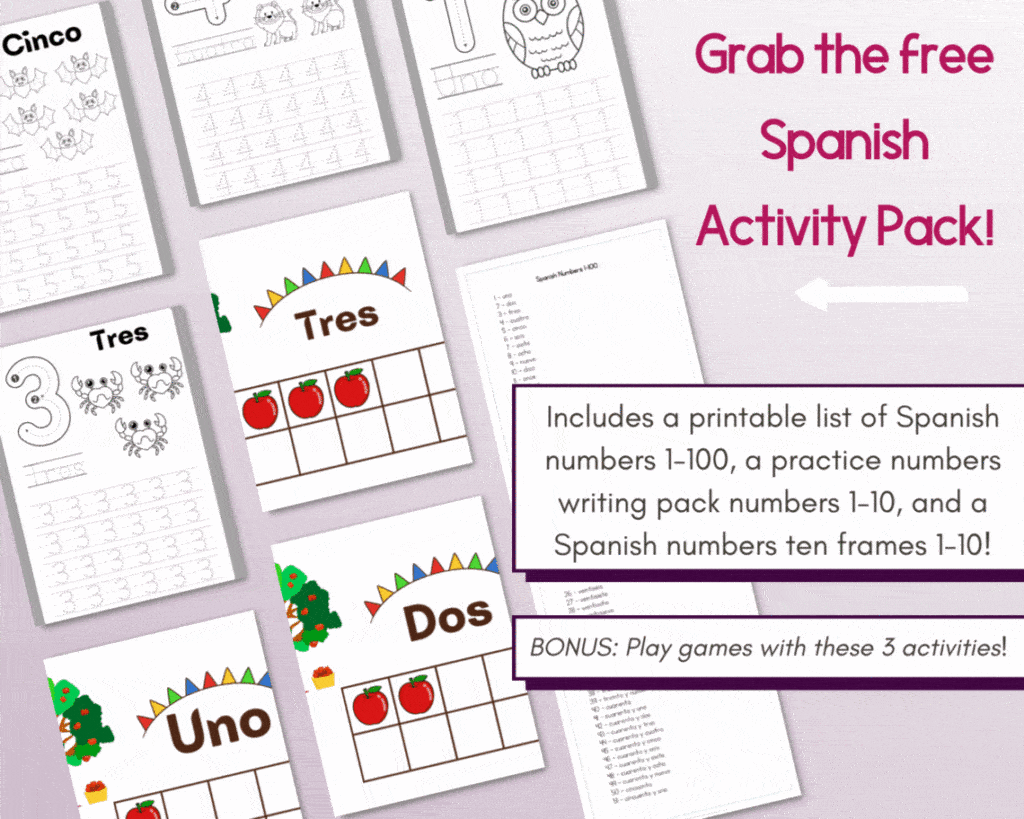
Demonstrative Adjectives
Demonstrative adjectives are used to point out specific people or things. In Spanish, there are four different demonstrative adjectives: este (this), ese (that), aquel (that over there), and los cuales (the ones).
Like other adjectives, demonstrative adjectives must agree with the noun they are modifying in both gender and number. So, if you’re talking about a masculine object that’s close to you, you would say “este libro” (this book). But if you’re talking about a feminine object that’s close to you, you would say “esta casa” (this house).
Interrogative Adjectives
Interrogative adjectives are used to ask questions about people or things. In Spanish, there are three different interrogative adjectives: qué (what), cuál (which), and cuánto (how much).
These adjectives are used when you don’t know the specific noun you’re looking for. For example, if you’re looking for a book but you don’t know which one, you would say “¿Qué libro buscas?” (What book are you looking for?).
Or if you’re trying to find out how many books someone has, you would say “¿Cuántos libros tienes?” (How many books do you have?).
If you want to see which book is best, you would say “¿Cuál es el mejor libro?” (Which is the best book?).
Descriptive Nouns And Descriptive Adjectives In Spanish Examples
You might confuse Spanish descriptive adjectives with descriptive nouns, but they are two different things. The main differences are that a descriptive adjective is used to describe a quality or characteristic of a person or thing, whereas a descriptive noun is a person or thing that embodies a quality or characteristic.
For example, “el rojo” (the red one) is a descriptive noun because it refers to a specific thing that is red. “Rojo” (red) is a descriptive adjective because it describes the color of that thing.
Here are some other examples of descriptive nouns in Spanish:
- la inteligencia (intelligence)
- la belleza (beauty)
- la felicidad (happiness)
- la amistad (friendship)
- el coraje (courage)
- la bondad (kindness)
As you can see, these words are all qualities or characteristics that can be embodied by a person or thing. And they can be used as either nouns or adjectives in Spanish.
Spanish Colors
Colors are one of the first things that kids learn when they start learning a new language. In Spanish, there are many different colors to choose from.
Here are some of the most common colors in Spanish:
- Rojo (red)
- Azul (blue)
- Amarillo (yellow)
- Verde (green)
- Morado (purple)
- Café (brown)
- Negro (black)
- Blanco (white)
Spanish color is a descriptive noun, so it must agree with the noun it’s describing in both gender and number. For example, if you’re talking about a masculine object that’s red, you would say “el coche rojo” (the red car). But if you’re talking about a feminine object that’s red, you would say “la casa roja” (the red house).
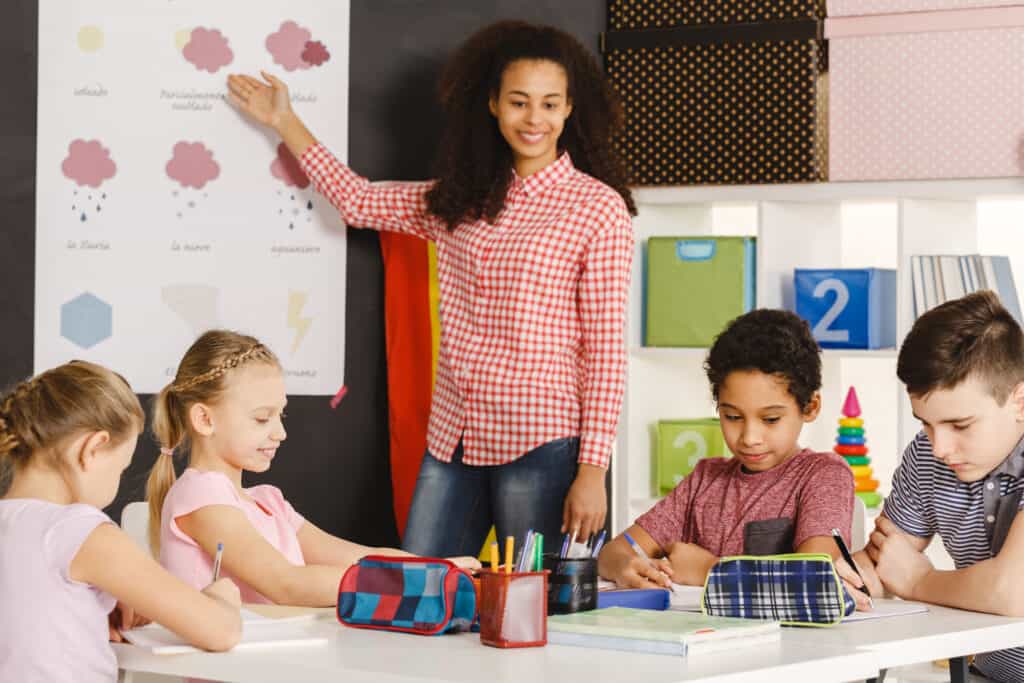
Spanish Numbers
Learning numbers in Spanish is an important part of any language. In Spanish, there are many different numbers to choose from. You can use numbers as adjectives too! See the below adjectives in Spanish examples!
Here are some of the most common numbers in Spanish:
- Uno (1)
- Dos (2)
- Tres (3)
- Cuatro (4)
- Cinco (5)
- Seis (6)
- Siete (7)
- Ocho (8)
- Nueve (9)
- Diez (10)
Number is a descriptive noun, so it must agree with the noun it’s describing in both gender and number. For example, if you’re talking about a masculine object that’s one, you would say “el coche uno” (the one car). But if you’re talking about a feminine object that’s one, you would say “la casa una” (the one house).
When to Use Adjectives
Adjectives are used to describe people or things. In Spanish, there are different rules for using adjectives depending on what you’re trying to say.
For example, if you want to say “the big house,” you would say “la casa grande.” But if you want to say “the big houses,” you would say “las casas grandes.”
Likewise, if you want to say “the good book,” you would say “el buen libro.” But if you want to say “the good books,” you would say “los buenos libros.”
Remember, adjectives must agree with the noun they are describing in both gender and number. So, if you’re talking about a masculine object that’s good, you would say “el buen libro” (the good book). But if you’re talking about a feminine object that’s good, you would say “la buena casa” (the good house).
When it comes to using common adjectives, practice makes perfect. The more you use them, the more natural they will become.
How To Strengthen Your Kids’ Spanish Skills
One of the best ways I learned Spanish was the ability to practice it. I remember sitting in a circle in several of my different Spanish classes and just taking turns talking about anything we wanted to talk about – but in Spanish.
Of course, at first, I’d have to ask my teacher what this or that meant (novio means boyfriend in case you were wondering). But the more time went on, the less I had to ask what certain words were in Spanish.
I was able to do this by constantly being exposed to the language – both in and out of the classroom. If you want your kids to get good at speaking Spanish, here are a few things you can do:
- Encourage them to watch Spanish TV shows or movies.
- Buy them Spanish books or comics.
- Have them listen to Spanish music.
- Teach them new words in Spanish every day.
- Practice speaking Spanish with them as often as you can.
- Visit a different country where they speak Spanish!
- Listen to the native language as much as you can!
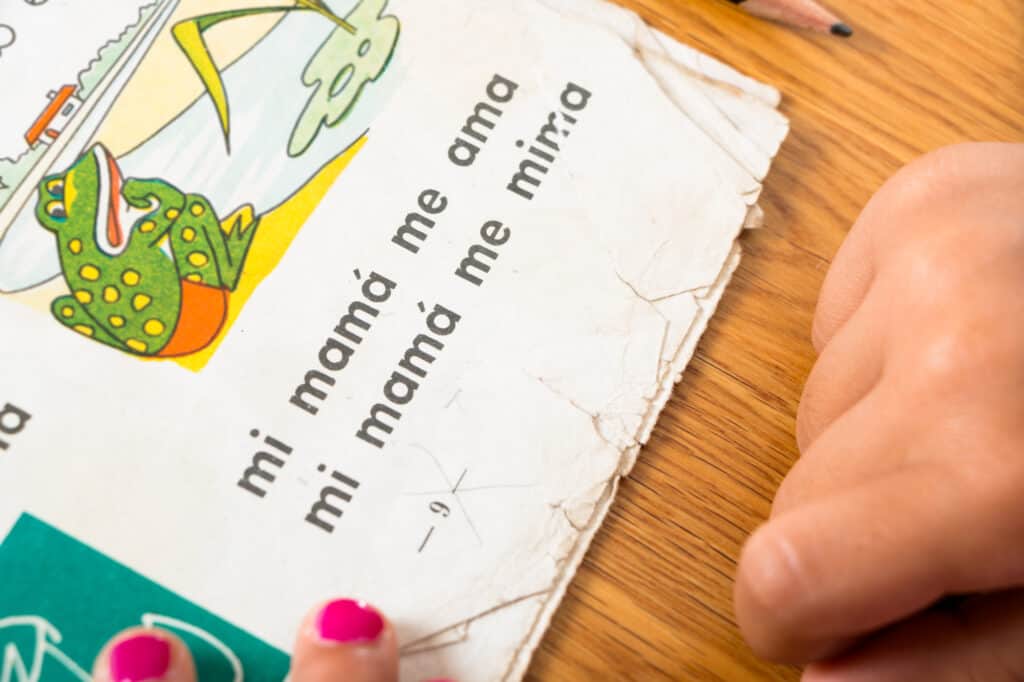
You might also want to take time to listen to native speakers on simple topics on Youtube and then discuss in Spanish, identifying the Spanish words and their English counterpart (or English equivalent). Maybe your child will be able to pinpoin use Spanish adjectives from what they’ve learned and its English translations of those words.
The best way to learn this language is practice! Begin by just using a simple sentence to start. As you do so, you’ll help build your child’s new vocabulary up they’ll be able to use their new words in a Spanish sentence before you know it! Common words, such as colors or Spanish food, are likely to easily be committed to memory before more challenging ones.
As your child learns Spanish, help them practice their Spanish pronunciation too.
The more exposure your kids have to the language, the better they’ll be at understanding and speaking it. So, go ahead and turn on that Spanish TV show and let the learning begin!
70+ Good Spanish Adjectives For Kids To Master (+ Spanish Adjectives List)
The Spanish language is a fun language to learn and I hope this list of adjectives helps with the Spanish practice! Learning good common Spanish adjectives is a great way to improve your Spanish vocabulary. Be sure to practice using them in sentences so that you can get better at using them correctly. With some practice, you’ll be speaking like a native in no time!
If you’re looking for a good Spanish program for your kiddos, we love Flip Flop Spanish!
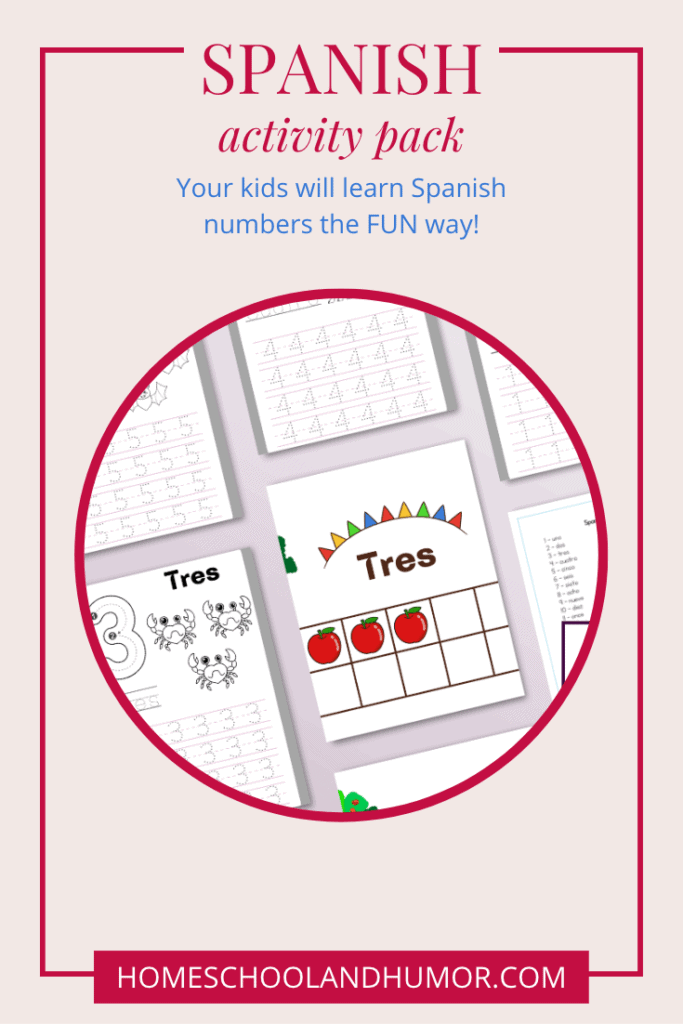
- Top 16 Indoor Games for Teens That Won’t Turn Your House into a War Zone - January 29, 2024
- Free Crafty Printable Christmas Countdown Calendars For Kids - December 17, 2023
- 12+ Very Cute Printable Christmas List Template For Kids - December 14, 2023

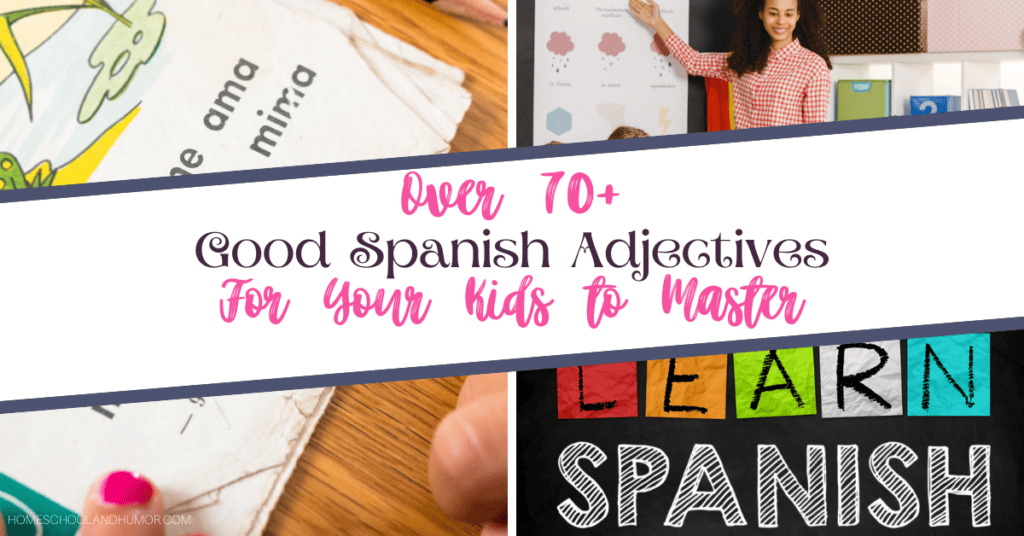
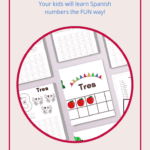
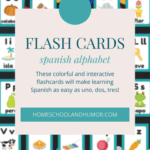
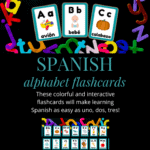
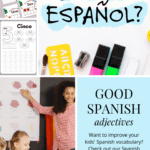
.png)
